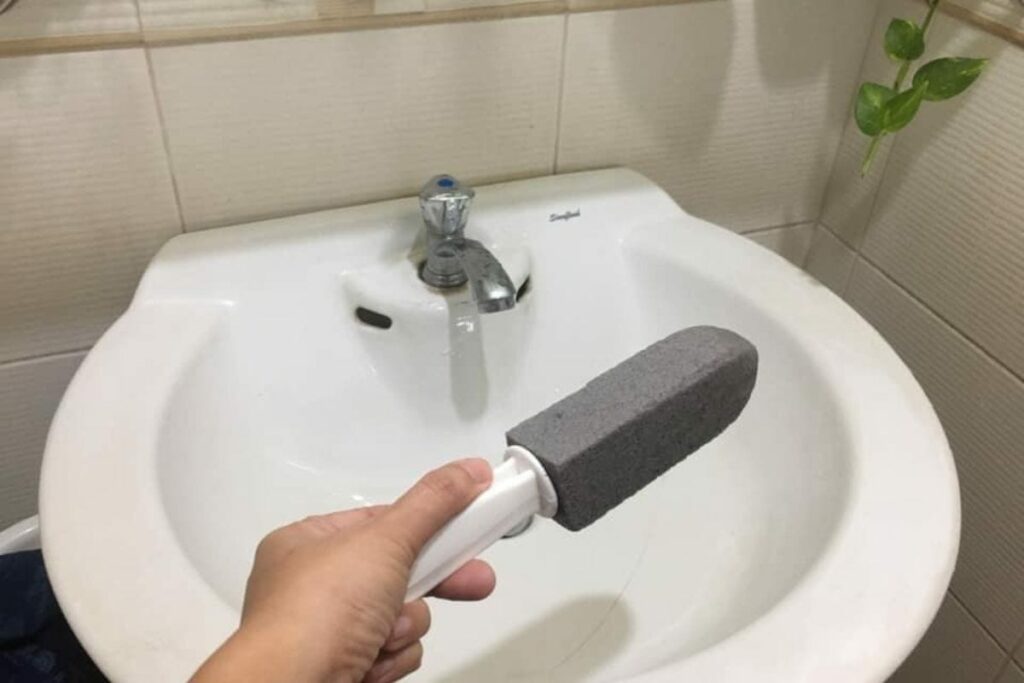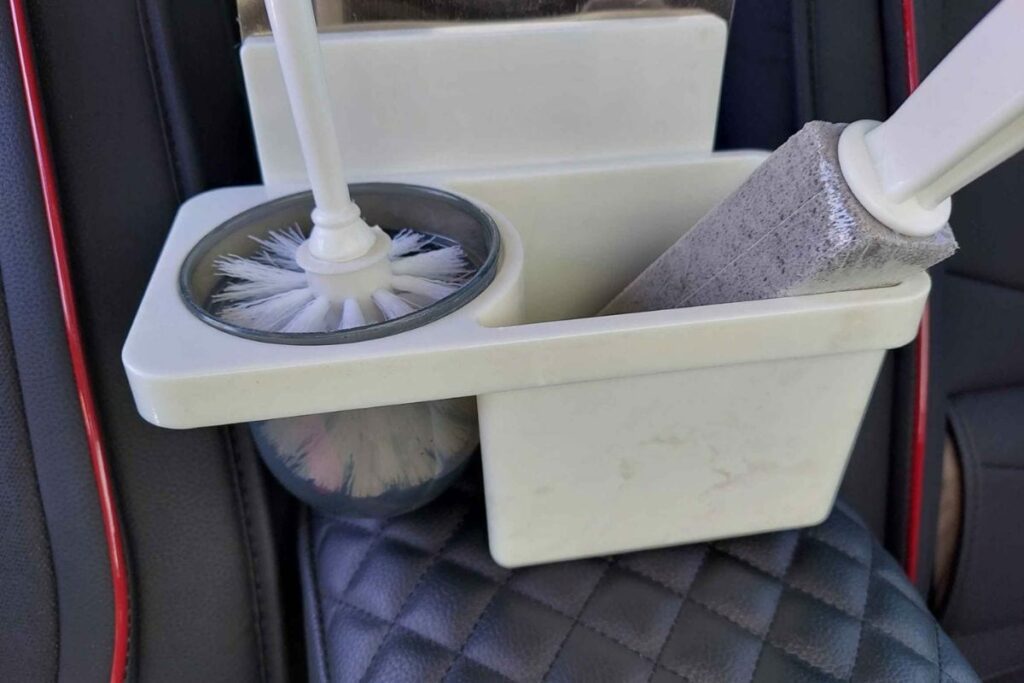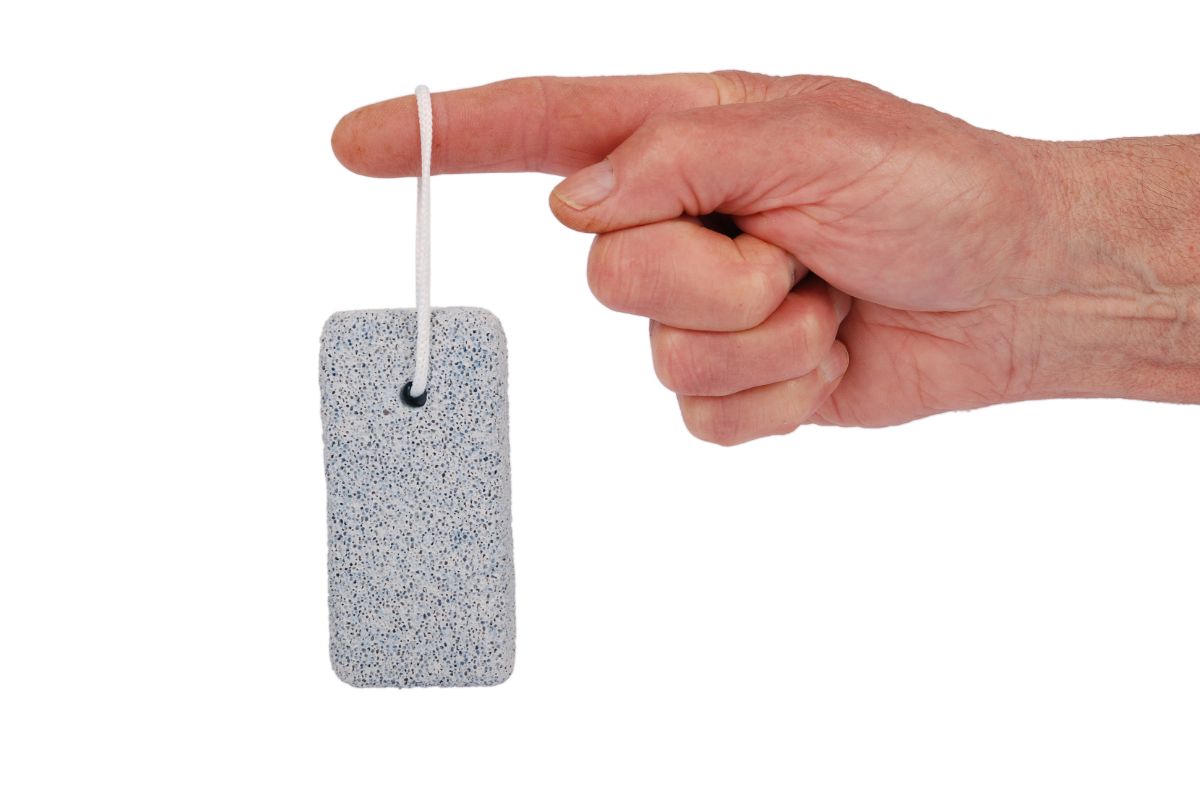If you’re like most people, you hate to clean a toilet. It’s not just gross — it’s difficult and time-consuming. But with a little effort, cleaning a toilet can be a breeze using a pumice stone. Here’s how to do it:
To clean a toilet with a pumice stone, submerge it into the water before using it so that it softens. Once it’s wet, start scrubbing the surface of the toilet with the pumice stone. After cleaning, rinse the surface and check if the stain marks are gone.
Pumice is a volcanic rock stone that is soft and porous in nature.
In communities where hard water is a problem, it’s hard to keep your toilet shiny and spotless. Luckily, a pumice stone can be your toilet cleaning friend.
In this article, I’ll discuss the tips to clean a toilet with pumice stone and its effectiveness.
Read on to find out!
4 Steps to Clean a Toilet With a Pumice Stone
What You’ll Need:
- A Pumice Stone (Preferably With Handle)
- A Bucket of Water
- A Cloth
Here are the steps to clean a toilet with a pumice stone:
#1 Clean the Toilet Normally
Before applying a pumice stone to your toilet, clean the toilet as you do regularly.
It will help clean easily removable stains and the stone would only be used against the stubborn toilet stains.
#2 Wet the Pumice Stone Before Using It
Make sure the stone is wet before you start scrubbing. This will soften the stone and prevent the toilet from unnecessary scratches and abrasive marks.

Wetting the stone will also help to remove any dirt and debris that may already be on the stone.
#3 Scrub the Surface of the Toilet
By applying gentle pressure, start by scrubbing the surface of the toilet with the wet pumice stone. Rub the stone gently for 30 seconds or more depending on the need. It will start removing lime and scale buildup, toilet bowl rings, and rust stains.
Be sure to use circular, small motions to get into all the nooks and crannies.
#4 Rinse and Check for Stains
It’s good to check your cleaning progress by rinsing the toilet surface. After cleaning the stains and calcium deposits, rinse the toilet thoroughly with water.
Make sure to remove any excess soap or pumice stone residues. If the stains are still there, it may be necessary to use a cleaner on a more stubborn stain.
However, if all of the stains have been removed, you can dry off the surface of the toilet with a cloth and you’re good to go!
How to Store a Pumice Stone After Toilet Cleaning?
After you finish cleaning your toilet, rinse the pumice stone and clean it with a toilet brush. Store your pumice stone in a dry place. It is important to store the pumice stone so that it will not become wet and lose its effectiveness.

Make sure to replace the stone after every few months so that it doesn’t accumulate bacteria.
Where Can You Get a Pumice Stone?
Pumice stones are available online and in most pharmacies. Generally, they are not expensive and come in packs of up to 12 stones. If you want to clean various parts of your bathroom such as bathtubs, toilet seats, and sinks.
A pumice stone would probably cost less than ten dollars.
By buying multiple stones, you can keep one of your stones specific to toilet seat cleaning while the rest can be used for other bathroom parts.
How to Choose the Best Pumice Stone for Toilet Cleaning?
Pumice stones come in different shapes, sizes, and grades. It is important to choose the right stone for your specific needs. Some factors you should consider when choosing a pumice stone include grit size, shape, hardness, and porcelain compatibility.
If you have porcelain toilet bowls, it is important to choose a pumice stone that is hard enough to remove stubborn stains but gentle enough not to damage the bowl.
Generally, the grit size of a pumice stone affects how well it cleans surfaces. The finer the grit, the cleaner and smoother the surface will be after cleaning. However, some stones are more abrasive and can damage the porcelain.
You should also consider the shape of your stone. Long-bar stones are better for cleaning gray stains in tight spaces while big bricks are best suited for larger areas.
Finally, you need to decide if you want a pumice stone that comes with a handle or not. Handles make it easier to hold the stone while cleaning which is especially helpful when cleaning around the edges of the toilet bowl.
Will a Pumice Stone Scratch a Toilet?
A pumice stone will scratch the toilet if it’s made of wood or plastic. However, a pumice stone won’t scratch porcelain toilets if it’s wet. It’s abrasive enough to clean the stains and soft enough not to scratch the porcelain surface when used wet.
There are many factors that would need to be considered, including the make and model of the toilet, the hardness of the pumice stone, and the person using it.
Generally speaking, a pumice stone may scratch a toilet due to friction if it is used excessively or in an incorrect manner.
Before using a pumice stone to clean your toilet, I would advise always testing it on a small section of the tank to make sure it will not damage the porcelain.
Unless your pumice stone is accidentally dropped on the toilet, it won’t usually cause any scratches.
Tips to Clean a Toilet With a Pumice Stone
These tips will help you clean a toilet using a pumice stone efficiently and quickly:
- If your pumice stone doesn’t have a handle, be sure to wear hand gloves while cleaning.
- Try cleaning circular motions to clean the toilet rings instead of back and forth motions.
- Turn your bar-bricked stone into a chisel-like shape for more effective cleaning.
- Do not use the pumice stone on marbles, fiberglass, and wooden surfaces.
- Don’t press the pumice stone hard while scrubbing.
Frequently Asked Questions
Can You Use a Foot Pumice Stone to Clean Toilet?
You can use a foot pumice stone to clean the toilet. The pumice stone will remove all the plaque and dirt from the toilet bowl. Simply wet the pumice stone and apply it to the dirty area of the toilet. Use circular, back-and-forth, and up-and-down motions to scrub the surface until the toilet is clean.
Will Pumice Stone Remove Rust From the Toilet Bowl?
A pumice stone can be very effective in removing rust and other contaminants from surfaces by breaking down the surface layer. If you are concerned about rust contamination in the toilet bowl, it may be a good idea to try using pumice stone before resorting to more conventional methods such as bleach or scrubbing.
Does Pumice Stick Damage Toilets?
In general, pumice sticks don’t damage toilets. In fact, pumice sticks are made of volcanic ash and are abrasive which helps to clean and remove built-up residue and dirt from the toilet bowl.
Can I Use Pumice Stone on Porcelain?
You can use the pumice stone on most porcelain surfaces such as toilet bowls, toilet tanks, sinks, faucets, tubs, etc. However, it is important to note that pumice stone can scratch porcelain if the surface is not properly cleaned and wetted.
Conclusion
While soda, vinegar, bleach, and lemon are also good DIY toilet cleaning hacks, a pumice stone is no less than them.
With its abrasive surface, this stone can help remove hard water stains from toilet bowls. In addition to cleaning toilets, a pumice stone can also be used against the hard-to-reach areas around the sink and faucet.

Amos Christen graduated with a bachelor’s degree in Interior Design from Drexel University — Philadelphia, PA. Since 2003, Amos has worked with top interior design professionals in this area, including architects and interior/graphic/lighting designers. As a skilled interior designer, Amos Christen is highly versed in fine arts and crafts and uses that to supplement his main area of expertise. He often publishes articles related to home décor on several websites, including Sprucetoilets.com, Sprucebathroom.com, and Mybesuitedhome.com. He also contributes to leading interior design magazines.
